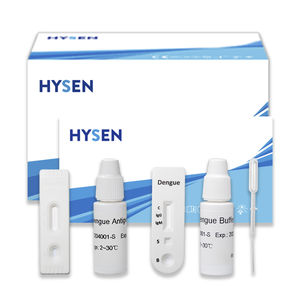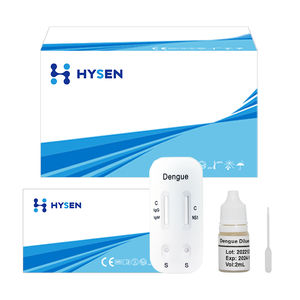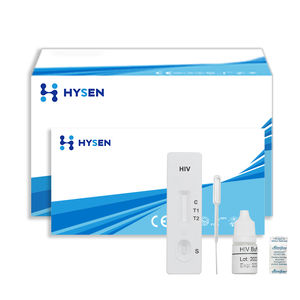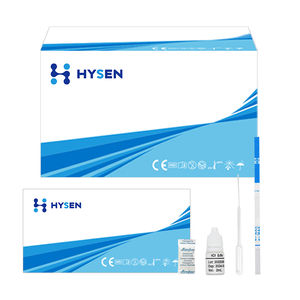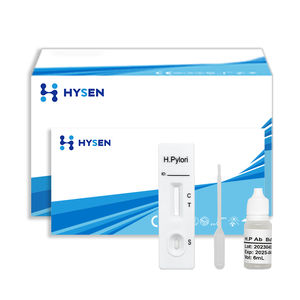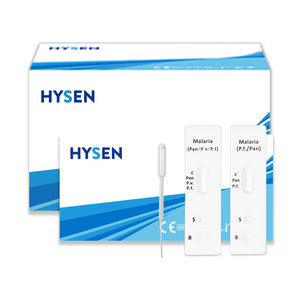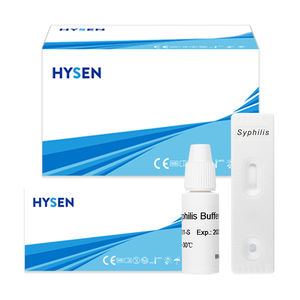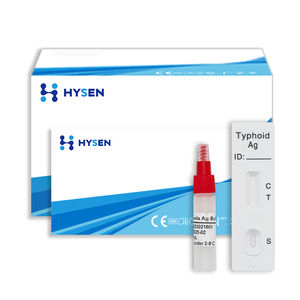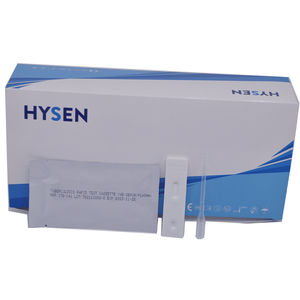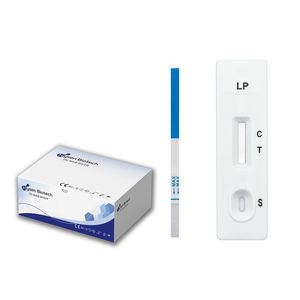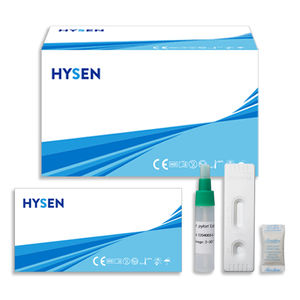
- Laboratory
- Laboratory medicine
- Rapid flu test
- HYSEN HANGZHOU BIOTECH

- Company
- Products
- Catalogs
- News & Trends
- Exhibitions
Rapid flu test Flu A+Bfor antigensinfluenza Ainfluenza B

Add to favorites
Compare this product
Characteristics
- Applications
- flu
- Tested parameter
- for antigens
- Micro-organism
- influenza A, influenza B
- Sample type
- nasal, pharyngeal
- Analysis mode
- immunochromatographic
- Format
- strip
- Other characteristics
- self-test
- Result display time
15 min
- Specificity
99.7 %
- Sensitivity
98.6 %
Description
Influenza (commonly known as ‘flu’) is a highly contagious, acute viral infection of the respiratory tract .It is a communicable disease easily transmitted through the coughing and sneezing of aerosolized droplets containing live virus.Influenza outbreaks occur each year during the fall and winter months. Type A viruses are typically more prevalent than type B viruses and are associated with most serious influenza epidemics, while type B infections are usually milder. The gold standard of laboratory diagnosis is 14-day cell culture with one of a variety of cell lines that can support the growth of influenza virus.Cell culture has limited clinical utility, as results are obtained too late in the clinical course for effective patient intervention. Reverse Transcriptase Polymerase Chain Reaction (RT-PCR) is a newer method that is generally more sensitive than culture with improved detection rates over culture of 2-23%. However, RT-PCR is expensive, complex and must be performed in specialized laboratories. The Influenza A+B Rapid Test strip (Swab/Nasal Aspirate) qualitatively detects the presence of Influenza A and/or Influenza B antigen in nasal swab or throat swab or nasal aspirate specimens ,providing results within 15 minutes. The test uses antibodies specific for Influenza A and Influenza B to selectively detect Influenza A and Influenza B antigen in nasal swab, throat swab or nasal aspirate specimens.
PRINCIPLE
The Influenza A+B Rapid Test Strip (Swab/Nasal Aspirate) is a qualitative, lateral flow immunoassay for the detection of Influenza A and Influenza B nucleoproteins in nasal swab, throat swab or nasal aspirate specimens.
VIDEO
Catalogs
No catalogs are available for this product.
See all of HYSEN HANGZHOU BIOTECH‘s catalogsRelated Searches
- Blood rapid diagnostic test
- Rapid lateral flow test
- Immunoassay rapid diagnostic test
- Cassette rapid diagnostic test
- Virus rapid diagnostic test
- Serum rapid diagnostic test
- Plasma rapid diagnostic test
- Infectious disease rapid diagnostic test
- Whole blood rapid diagnostic test
- Rapid respiratory infection test
- Urine rapid diagnostic test
- Bacteria rapid diagnostic test
- Strip rapid diagnostic test
- Rapid feces test
- Rapid drug abuse test
- Nasopharyngeal rapid diagnostic test
- Nasal rapid diagnostic test
- Rapid drug addiction test
- Self-test rapid diagnostic test
- Obstetrical/gynecological rapid test
*Prices are pre-tax. They exclude delivery charges and customs duties and do not include additional charges for installation or activation options. Prices are indicative only and may vary by country, with changes to the cost of raw materials and exchange rates.

